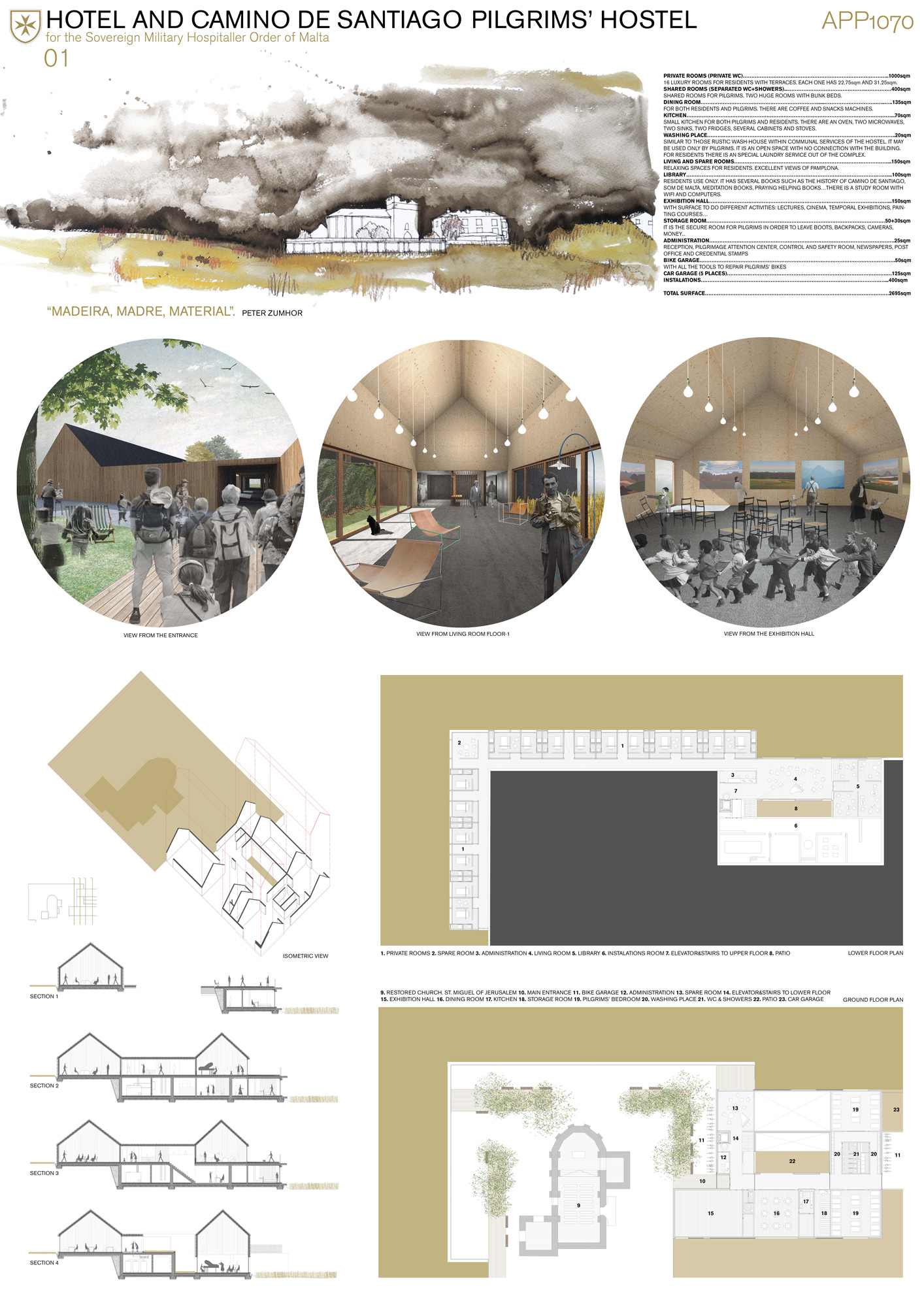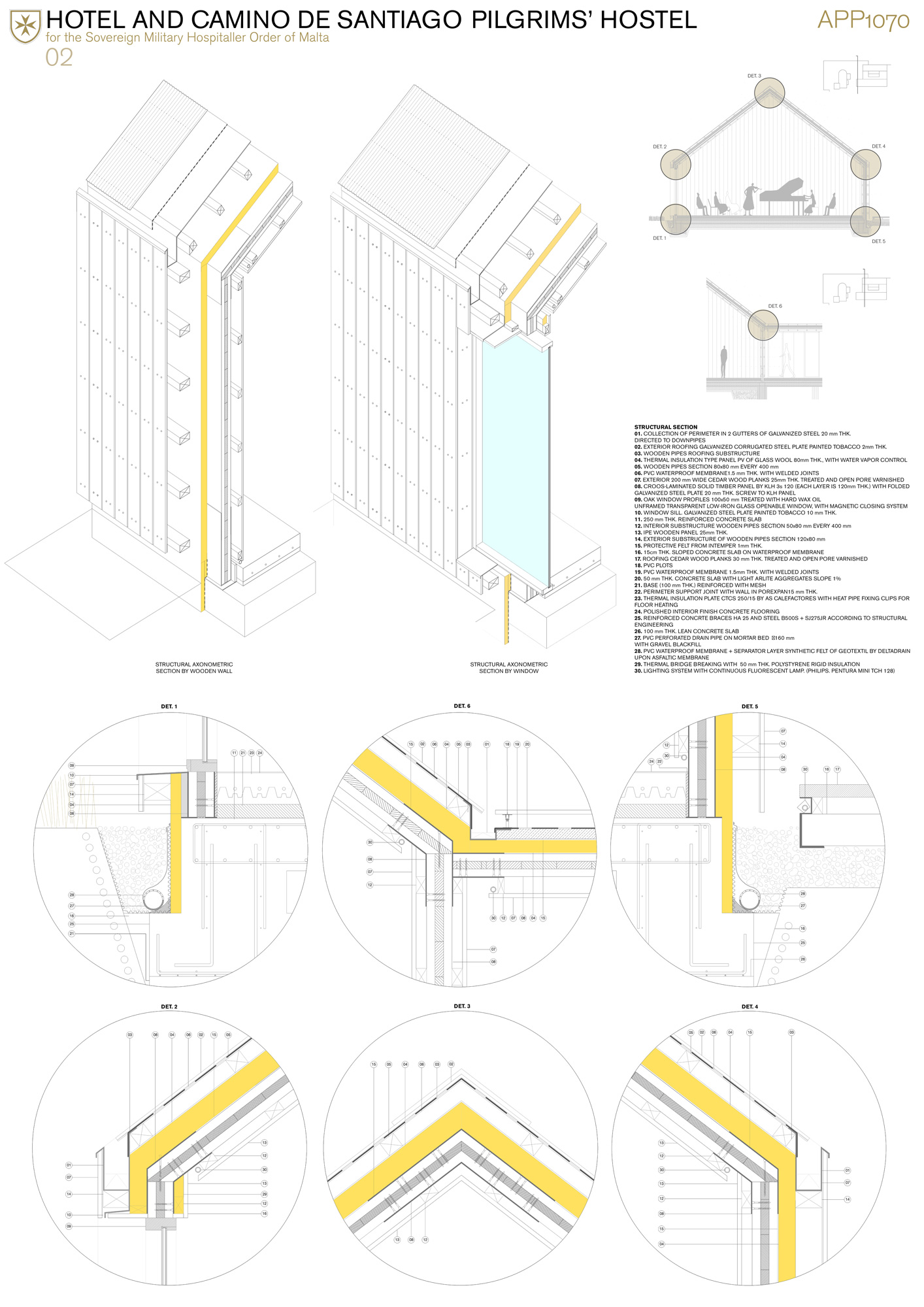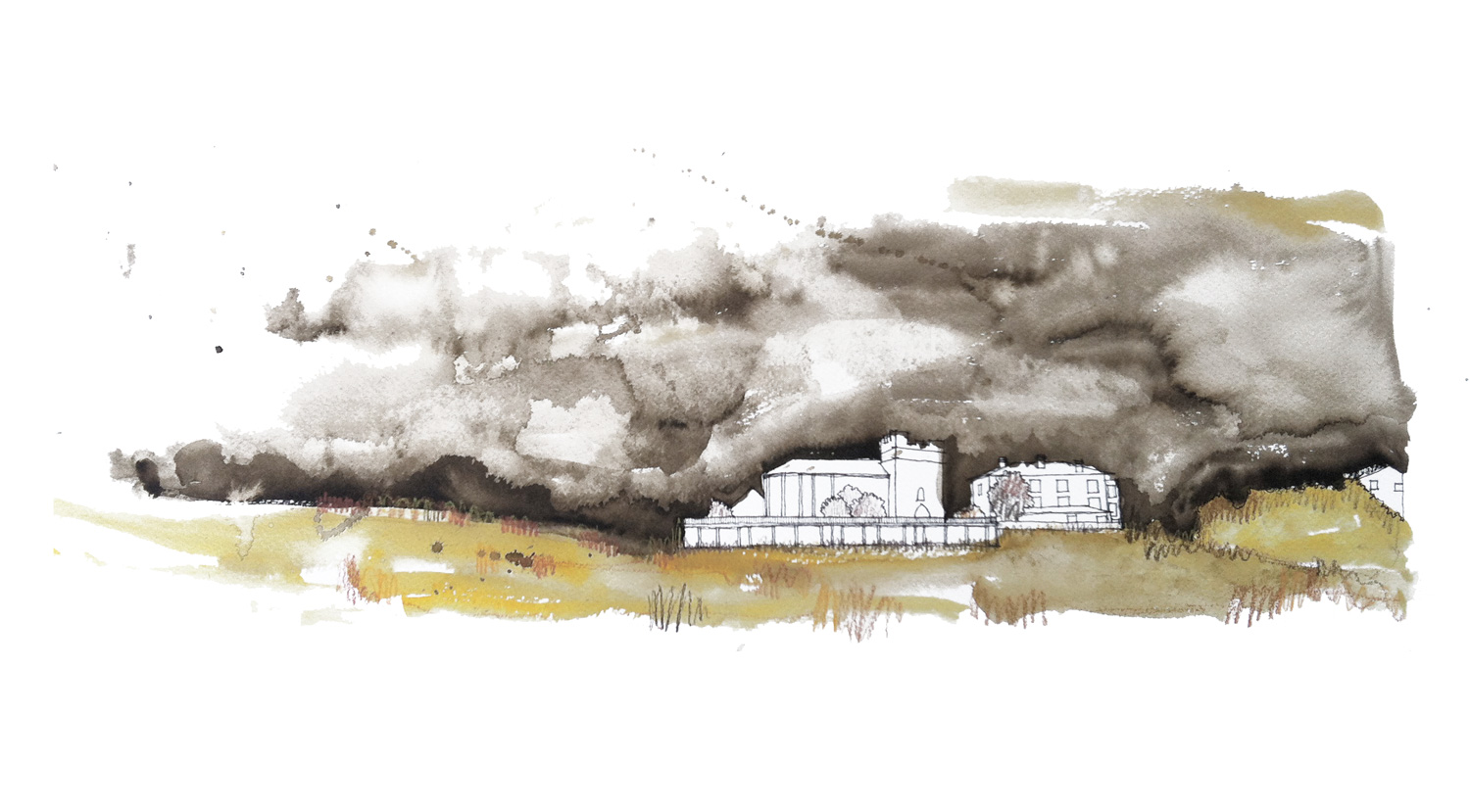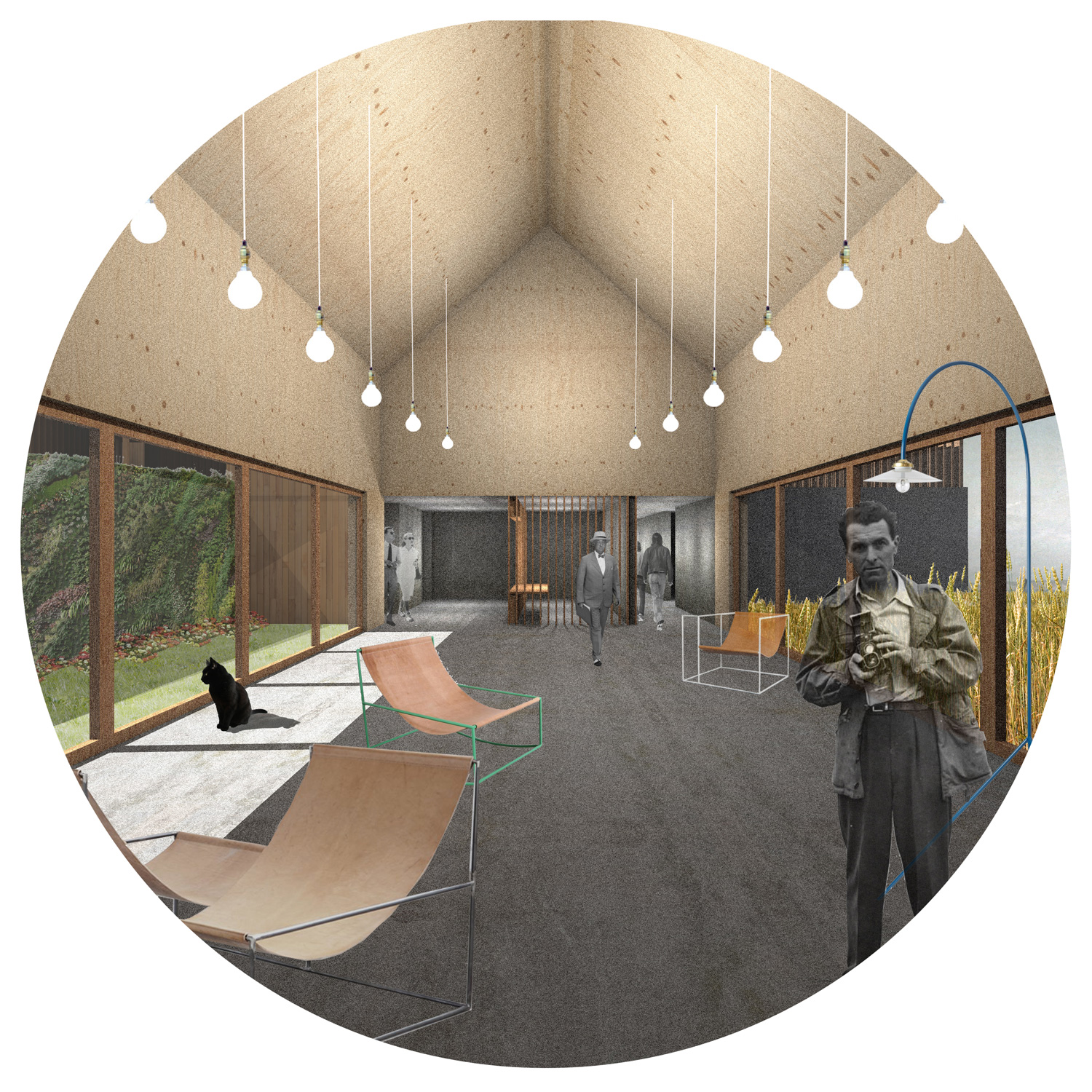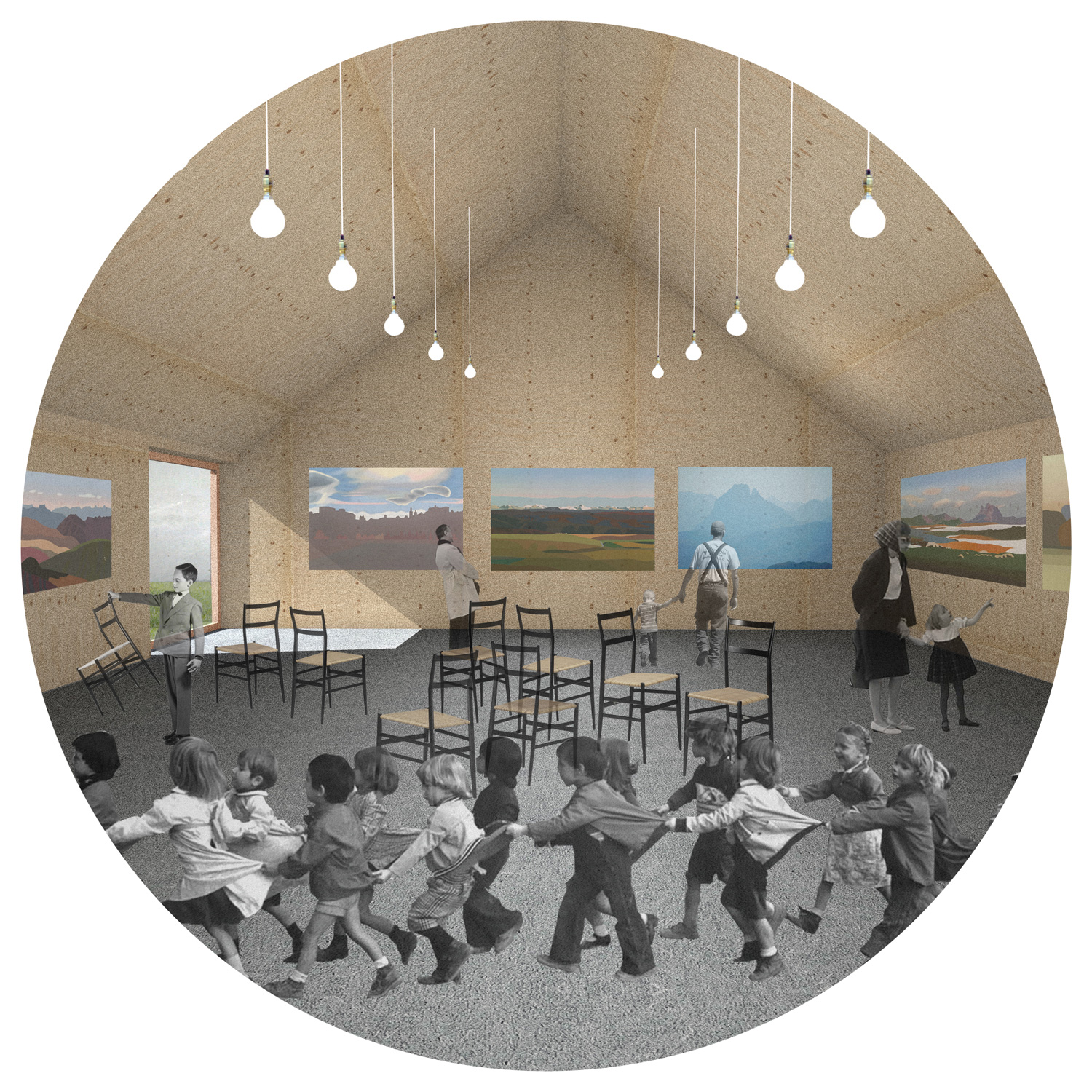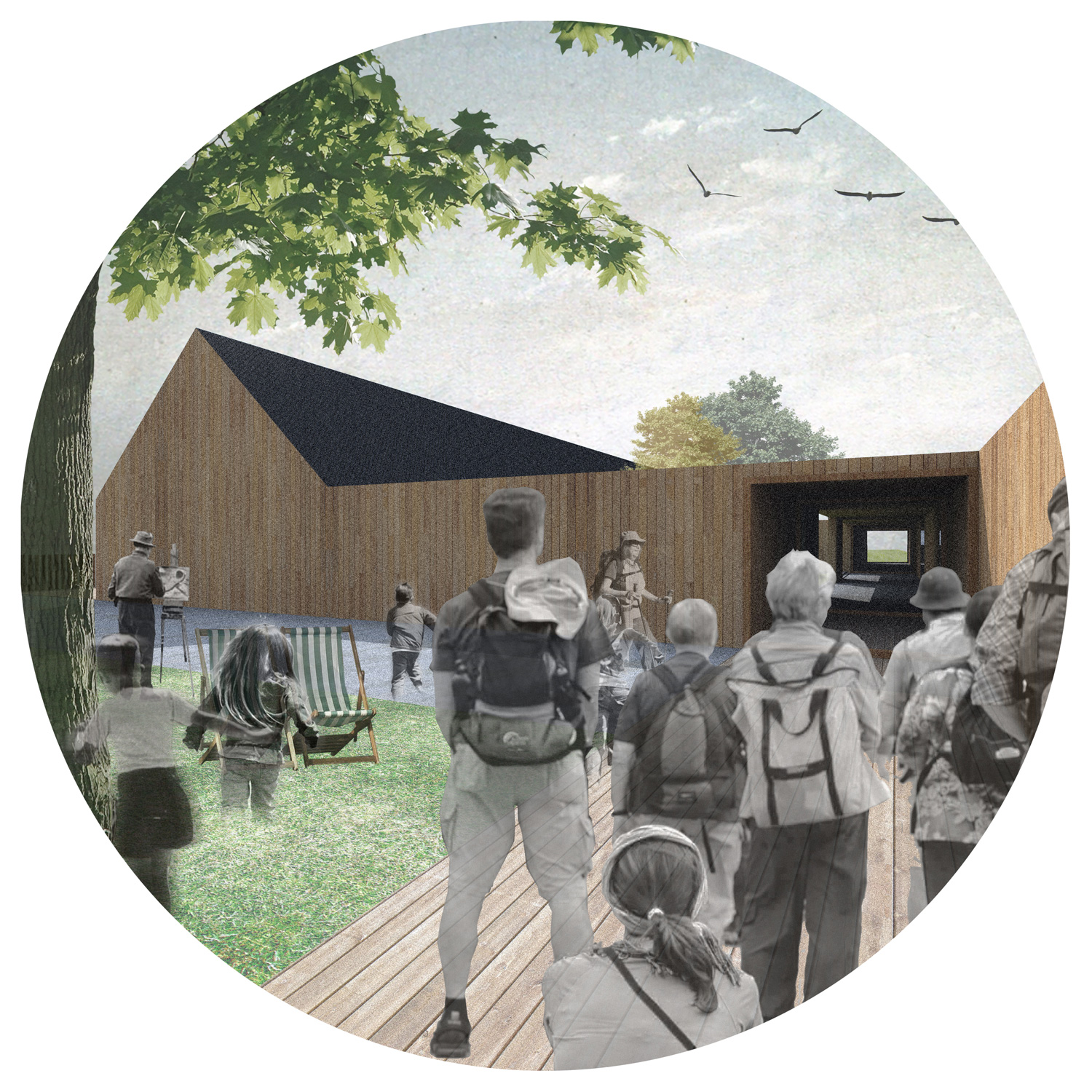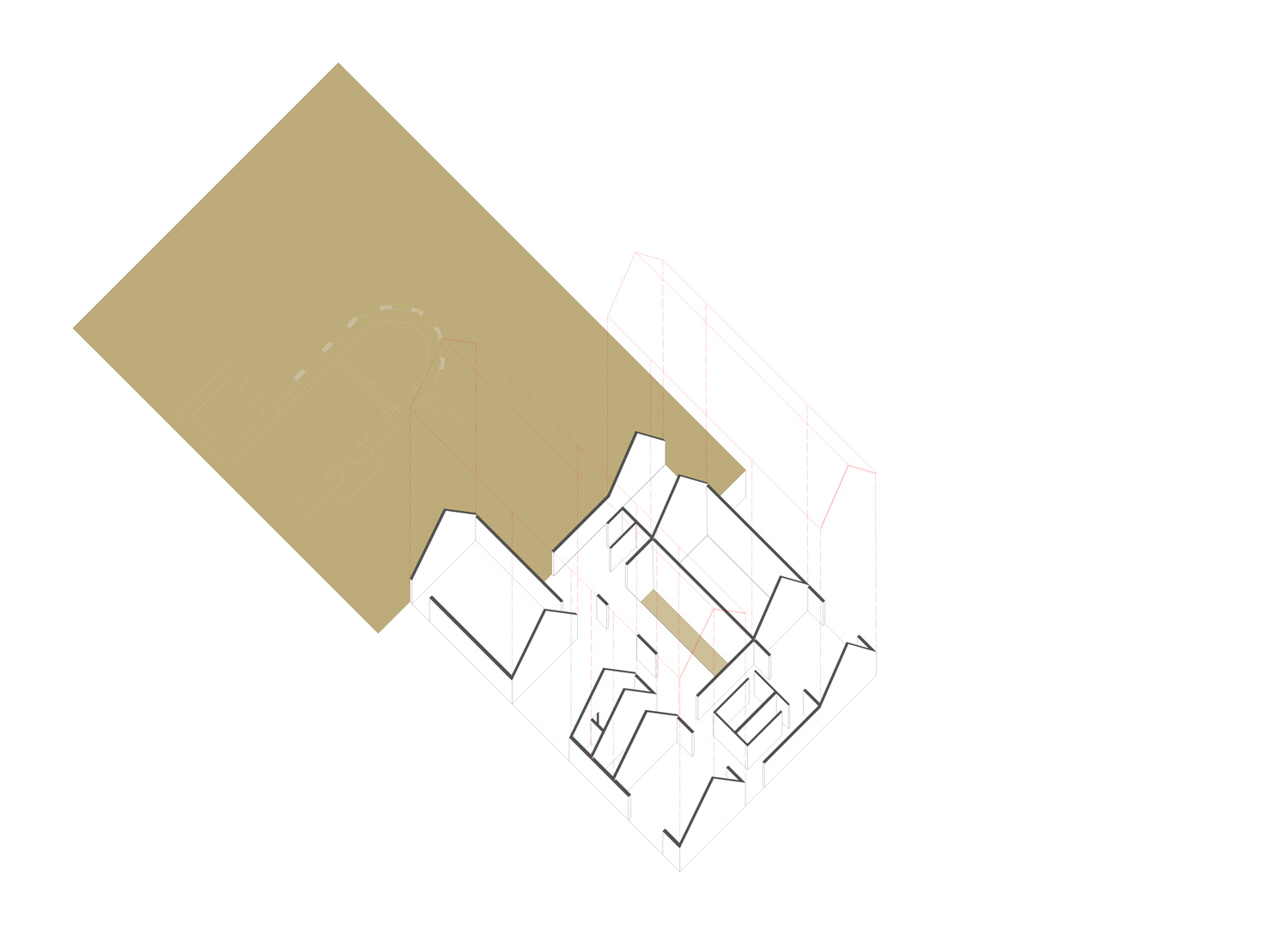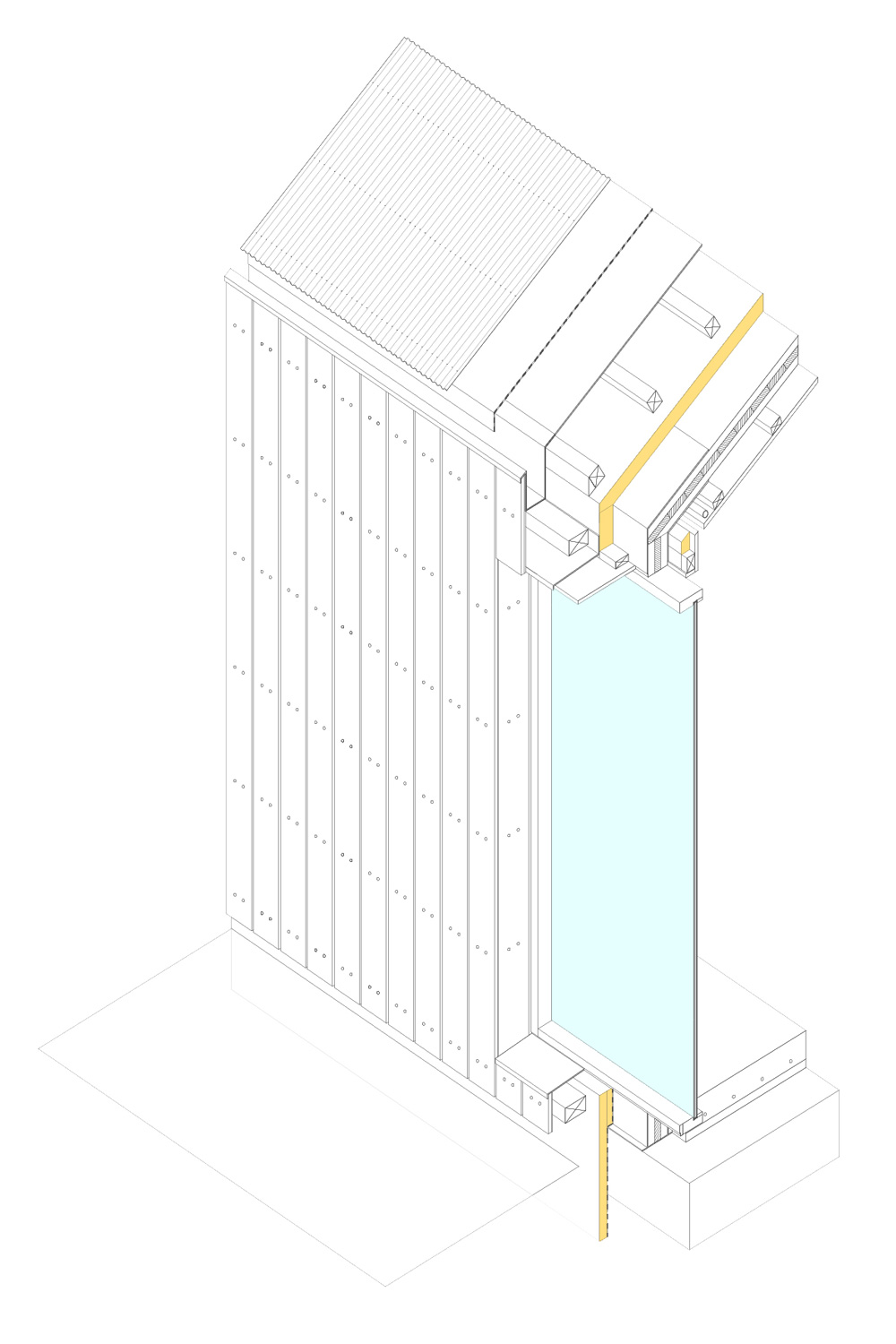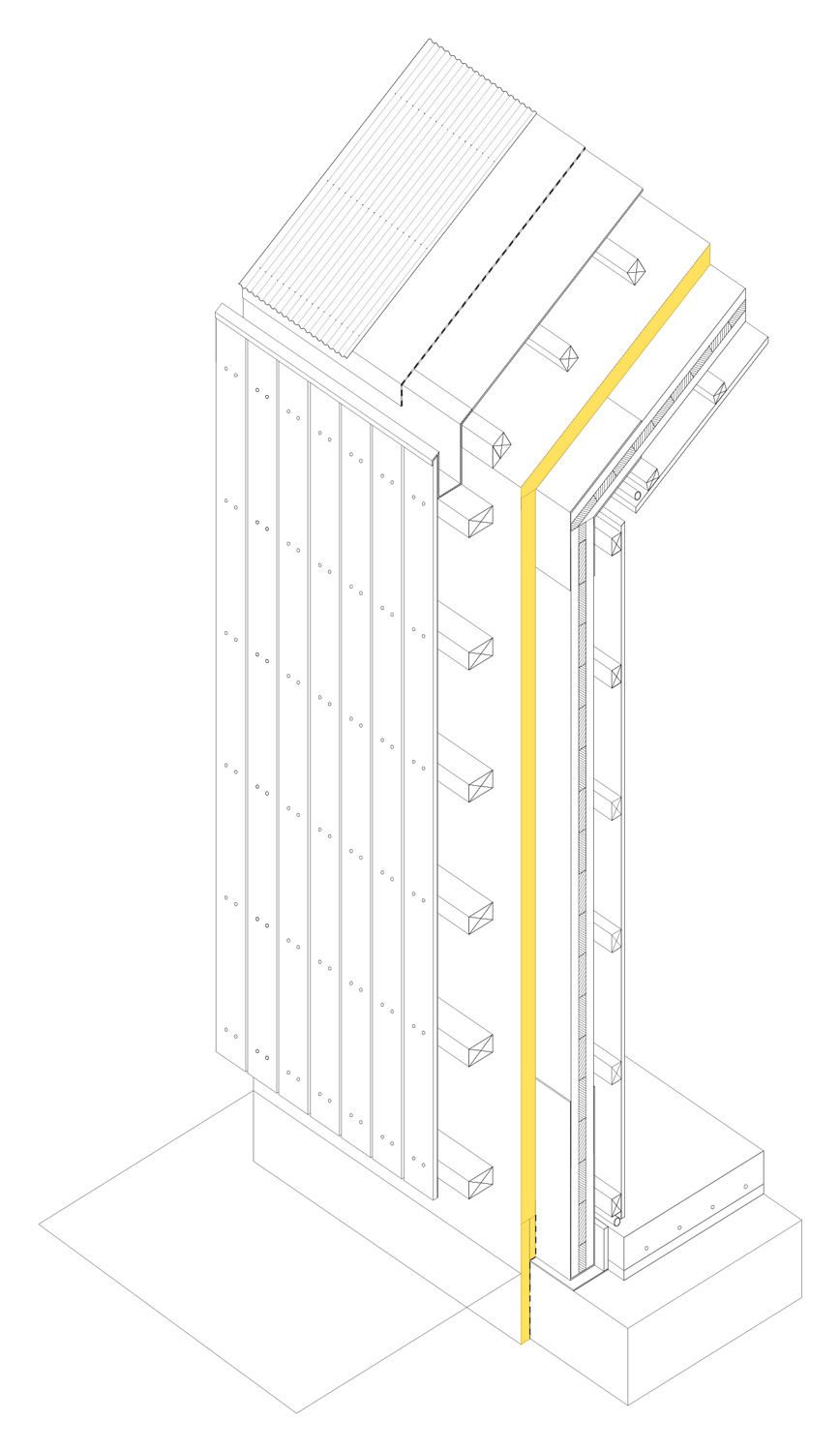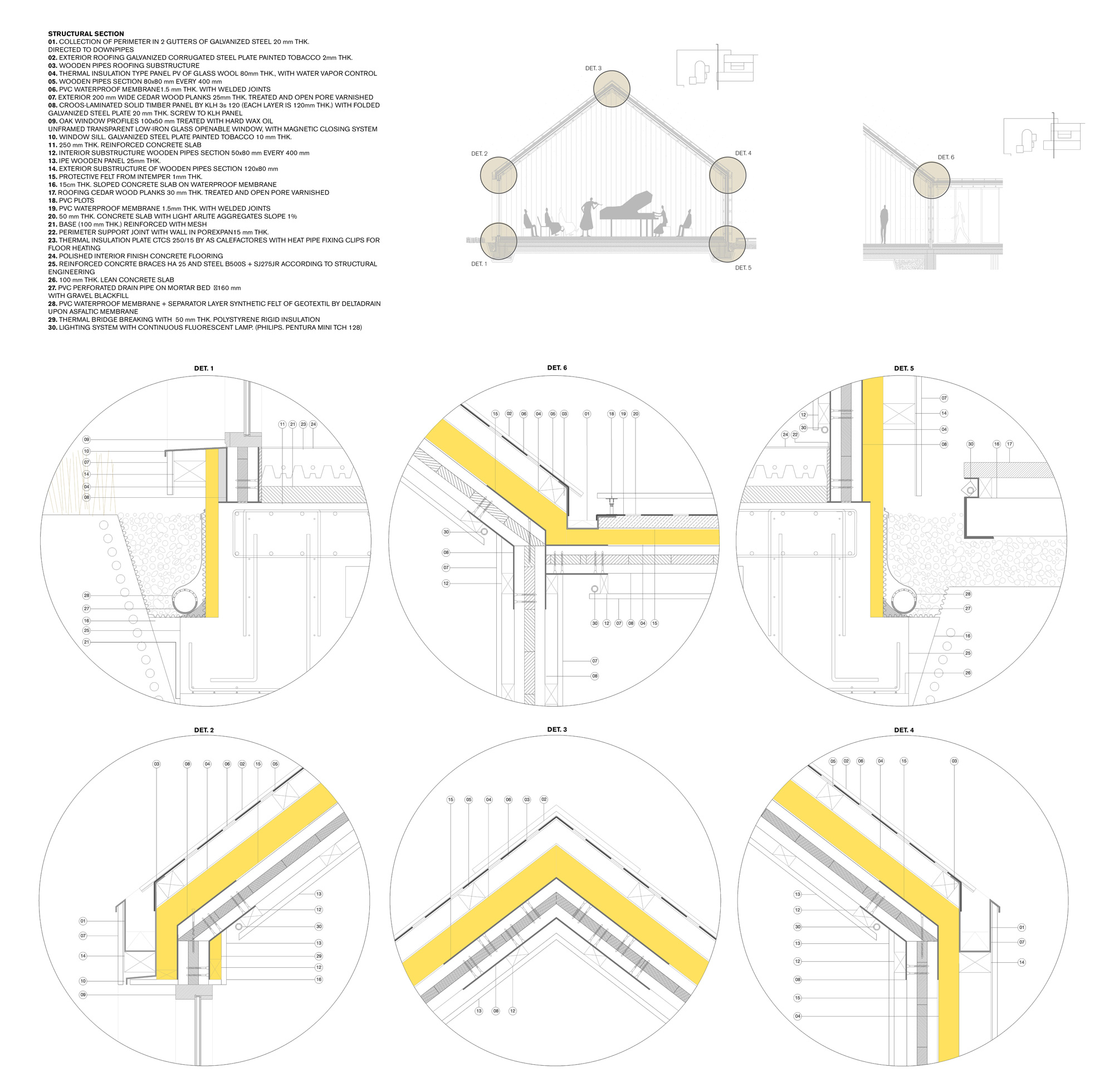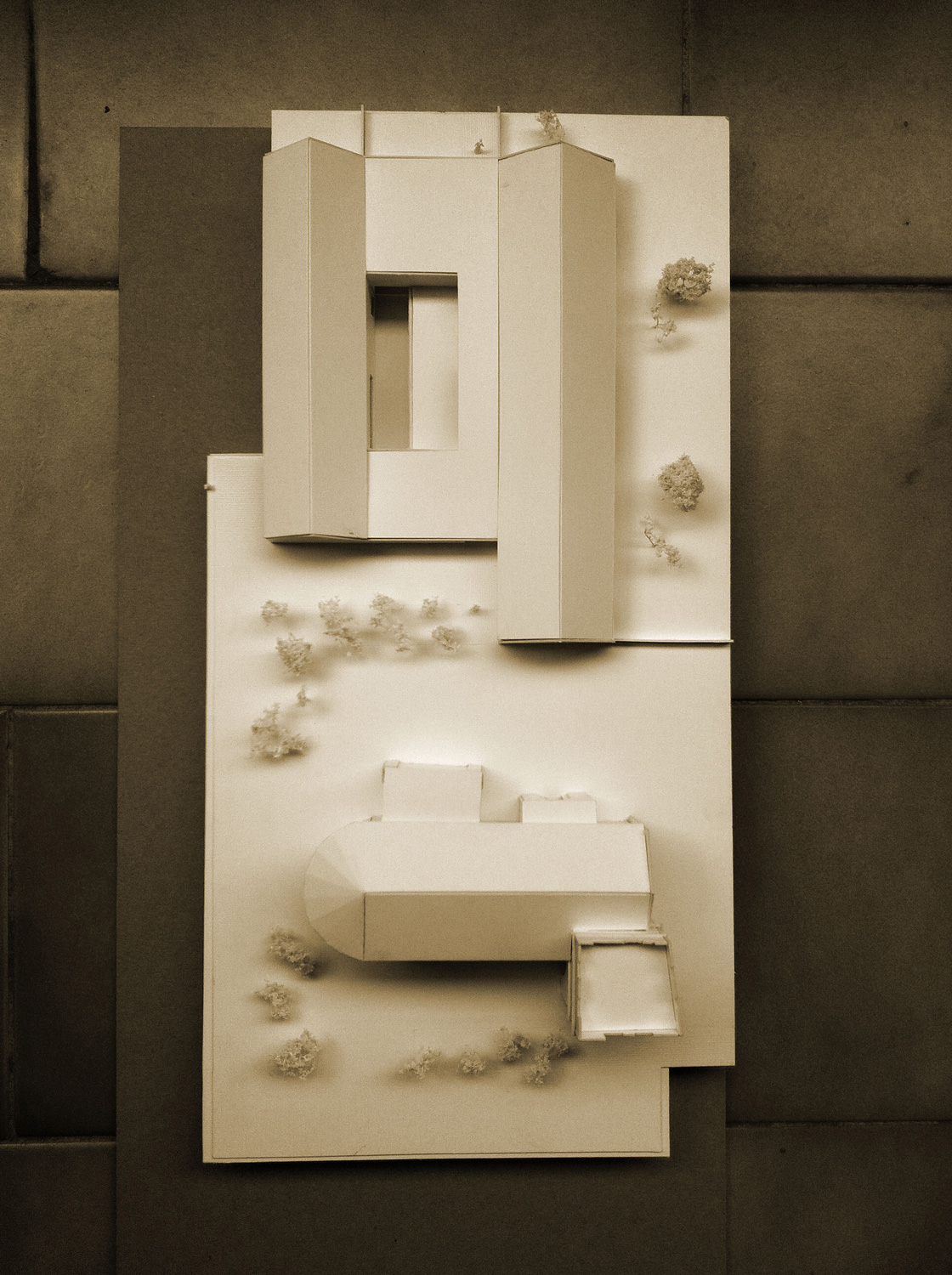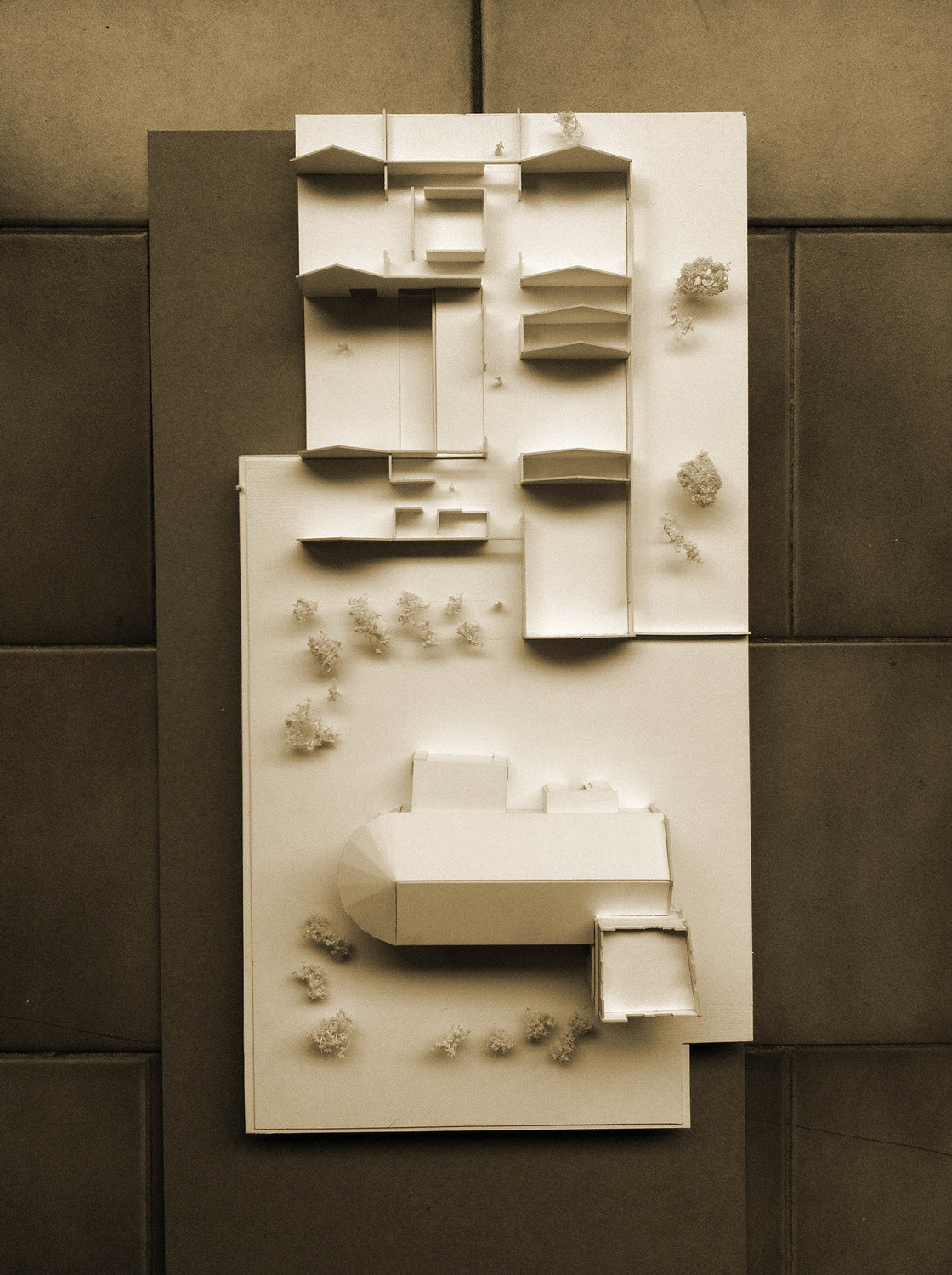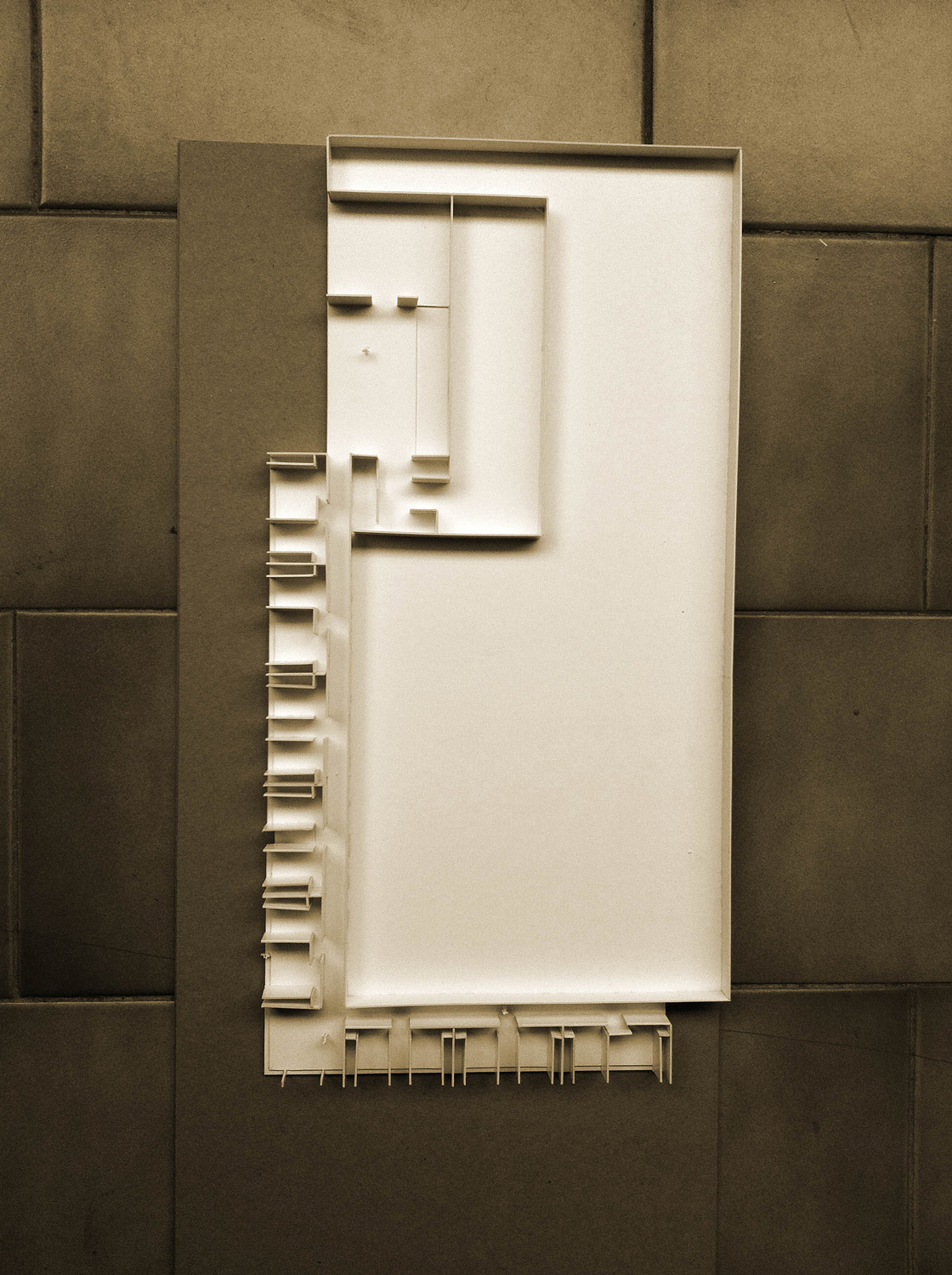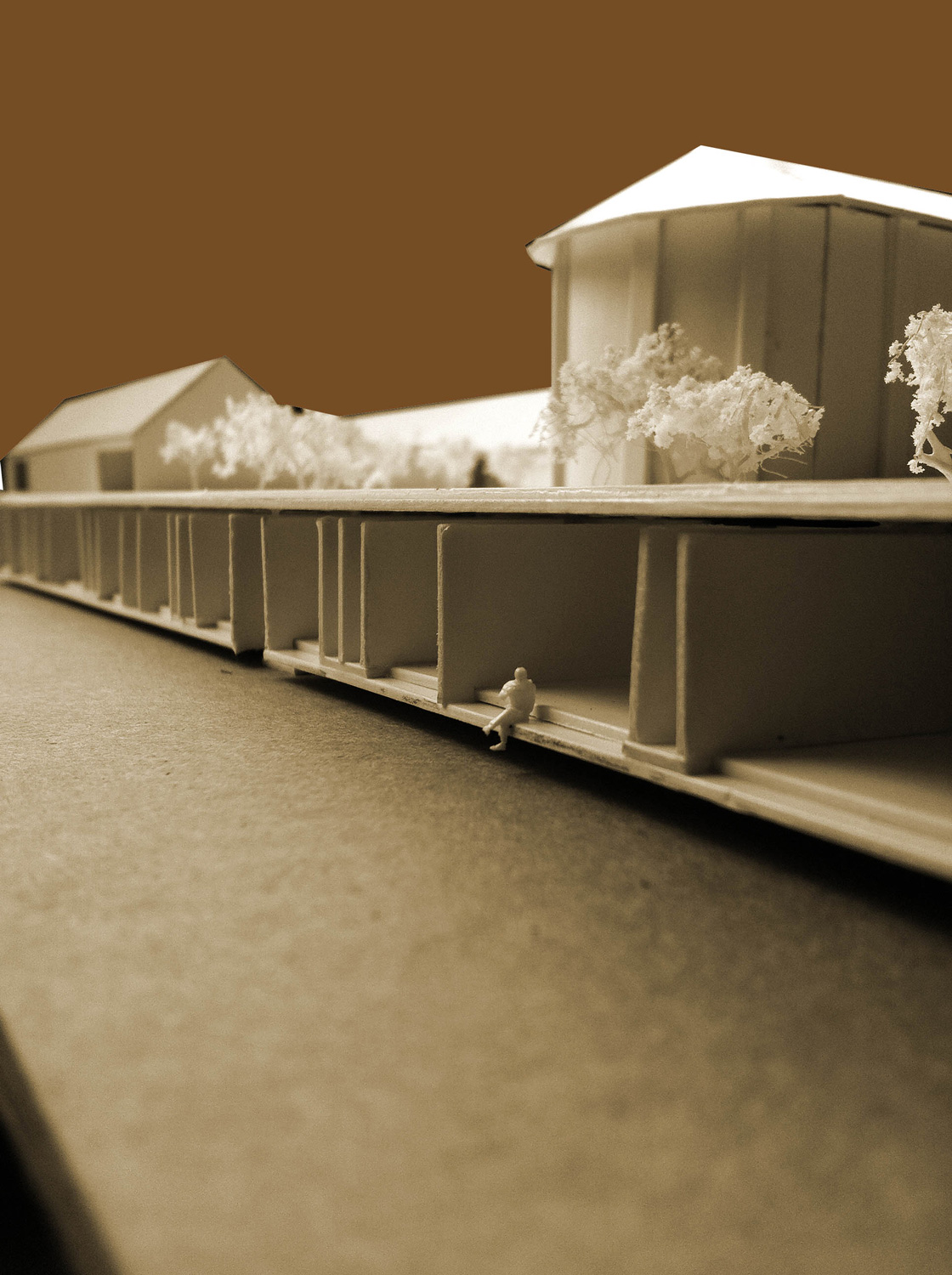☉ Hotel and Camino de Santiago Pilgrims’ hostel is an academic project by Enrique Iriso for ETSA Navarra in 2015. It is located in Cizur Menor Spain in a forest setting. Its scale is medium. Key material is wood.
A continuous wooden wall surrounds the space creating forms and areas for different uses. A wooden body that gives character to the space.
The project focuses in designing more with less. For instance, in relation to the materials. Good architecture is made by taking the best advantage of each material.
In this case, the main building and the construction technology is designed with a single material (wood panels), being squeezed by all the possibilities that they can offer, pushing it to its limits in order to accomplish the best in matter of light, space, proportions… And if not, then ask L. Kahn, A. Aalto or F. Ll. Wright.
The project is located in a town called Cizur Menor, just outside Pamplona. This town and its restored 13th century church of Saint Michael of Jerusalem are a very important landmark for the pilgrims that walk the “Camino de Santiago”. This gives historical identity to the context of the building.
Architecture is a expression of values, of all kind. From historical to constructive, from materials to structure, from wood to concrete. Thinking about context is the essence, the distinctive feature of this unique building. The project idea begins with the influence of its context. Every decision made is based in cultural, spiritual, material and structural principles. The project strategy is embracing the church by creating the main building below and a platform that creates an excellent viewpoint of Pamplona and its valley.
A plinth is built to create the platform where all the private rooms are located. The building below the church has all the rest of the program, such as the pilgrims’ rooms, the exhibition hall, the library, the living rooms, the patio, the dining room, the kitchen. Two atmospheres are creates: the lower floor (the residence) and the one that flourishes upon the earth, (the hostel and the rest of common rooms).
Two ways, the Stereotomic and the Tectonic.
The poetic idea of recovering an old space, that along the history was fundamental for pilgrims, like the Hospital of Saint Michael, is in itself attractive. Designing a new modern building that creates its own limits it is even more appealing.
Since the beginning, the project solution as one constructive system which may offer different alternatives according to the several requirements of the building (construction, technical, roofing, framework). This is why the border between these two worlds, these two different levels, at the same time dependent and independent, creates two functions. Hence, each one has its own life, its modus operandi, its different structural construction.
The main floor is built only with this new exclusive and green construction system, KLH cross-laminated timber panels. These can be used for all elements of a building’s superstructure. They are produced from kiln-dried finger jointed spruce/fur planks which are sorted and cut into sheets. These sheets are then stacked at right angles and glued under a high pressure bonding system in perpendicular layers. But not only the structure is made of wood: window frames, exterior planks and interior ipe wooden panels.
However, in the lower floor another law reigns. There, another atmosphere can be breathed, a more brutalist one and less warm: the law of rough concrete. Thus, the contrast with nature is really important. Even so, there are multiple similarities between both levels: wood and the relationship with the context. Two languages, two uses, two ways of construction: concrete and wood. The old and the new.
Architecture at the end.
